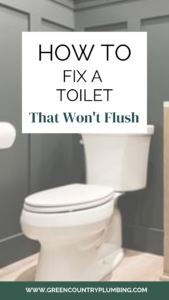
When it comes to fixing a toilet, one of the most important tools, and probably least expensive, you need is a plunger. A plunger is a simple device that creates suction and pressure to clear a blockage in your toilet or drain. However, not all plungers are created equal, and choosing the right one can make a big difference in how quickly and effectively you can fix the problem.
Choose The Best Plunger For Fixing a Toilet
- The type of plunger. There are two main types of plungers – cup plungers and flange plungers. Cup plungers are the most common type and are suitable for most clogs. They have a rubber cup that creates suction and pressure to clear the blockage. Flange plungers, on the other hand, are designed for toilets with an irregularly shaped drain. They have an additional rubber flap that creates a better seal around the drain and is more effective for fixing a toilet with stubborn clogs.
- Size. The size of the plunger is also important. A plunger that is too small may not create enough suction to clear the blockage, while a plunger that is too large may not fit well in the toilet bowl. A plunger with a cup diameter of 4 to 6 inches is suitable for most toilets.
- Material. The material of the plunger is another important factor to consider. Plungers made of rubber or silicone are more flexible and durable than those made of plastic. They also create a better seal around the drain and are less likely to damage your toilet bowl.
- Handle. The handle of the plunger should be long enough to provide enough leverage to create suction and pressure. A plunger with a short handle may not provide enough force to clear the blockage. Look for a plunger with a handle that is at least 18 inches long.
- Price. Plungers are available at various price points, and the most expensive plunger is not necessarily the best. Look for a plunger that is reasonably priced and meets all your needs.
Sink or Drain Clogs: Will A Plunger Work?
Yes, a plunger can also be used to clear clogs in sinks and drains. Although, it’s important to note that the type of plunger used for sinks and drains may be different from the one used for toilets.
For sinks and drains, a cup plunger is the best choice. Before using the plunger, remove any standing water from the sink or drain. Place the plunger over the drain and make sure it creates a tight seal around the opening. Then, pump the plunger up and down vigorously to create suction and pressure. Continue pumping for a few minutes or until the clog is cleared.
If plunging does not work, call Green Country Plumbing and have us snake the drain to clear the clog.
Considering using a drain clearing liquid? Avoid using chemical drain cleaners, as they can be harmful to both your plumbing and the environment. Check out our safe recipe here for drain clearing.

